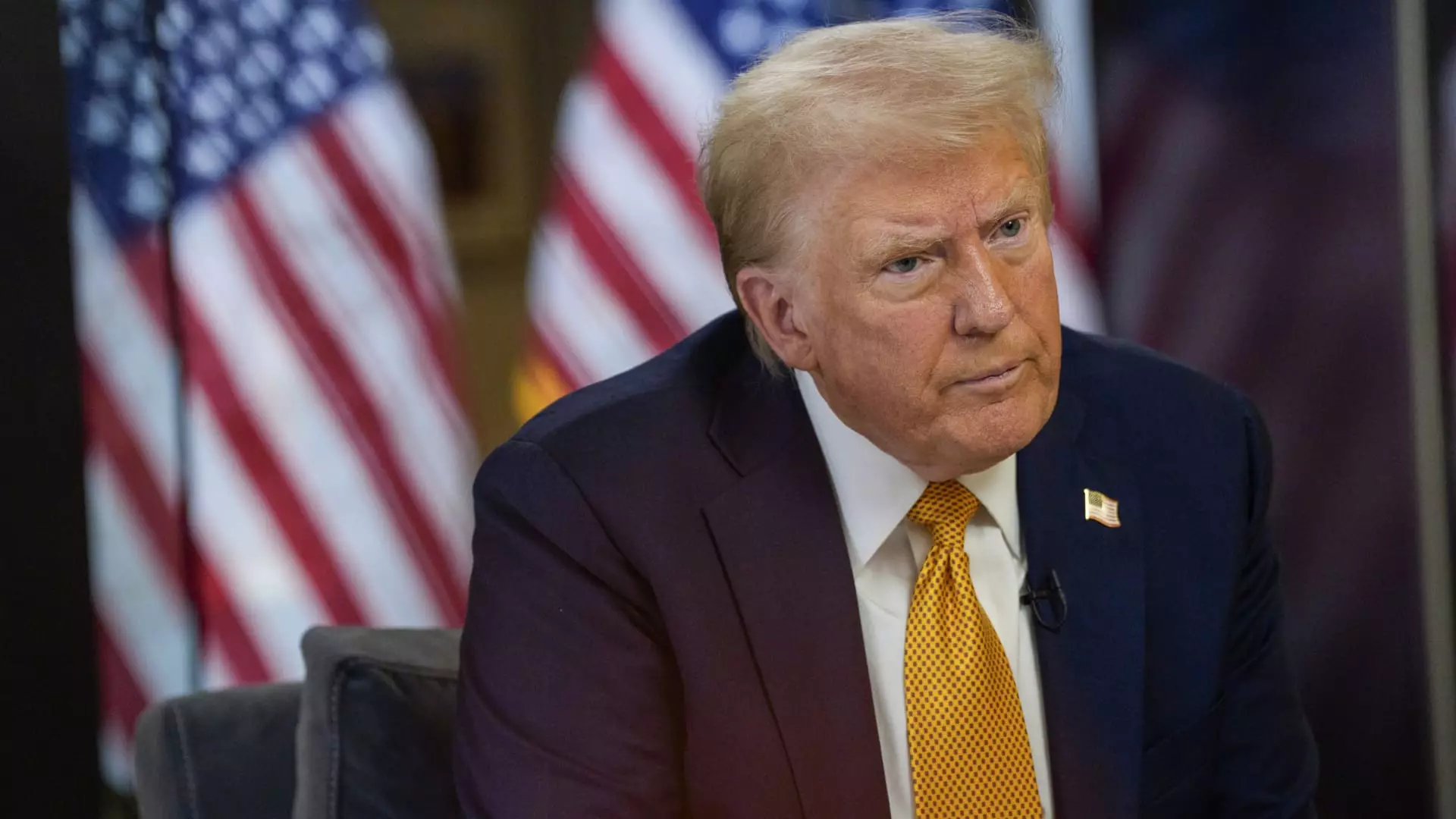In the realm of international trade, tariffs are a form of tax imposed on imported goods, acting as a mechanism to shield domestic industries from foreign competition. While advocates argue that tariffs protect local businesses, critics emphasize that these measures often lead to increased prices for consumers. As the specter of another Trump administration looms, discussions around the implementation of widespread tariffs are intensifying, particularly in light of President-elect Trump’s stated intentions to fulfill his campaign promises regarding trade policies.
Economic experts have weighed in on the potentially significant implications that Trump’s tariff policies could pose to American consumers. Erica York, a senior economist at the Tax Foundation, underscores that implementing tariffs inevitably translates into higher costs for consumers. This perspective highlights a troubling paradox: while the intention behind tariffs may be to bolster domestic markets, the immediate fiscal burden often falls squarely on the shoulders of taxpayers. Businesses that import these goods face increased expenses, and the likelihood of these costs being transferred to consumers is high. This cascading effect could exacerbate financial strains on low- and middle-income households, who are already grappling with rising living costs.
Furthermore, if tariffs become a substantial component of U.S. trade policy, they may depress business profits, leading companies to reconsider their investment strategies and employment practices. In the face of diminished profit margins, employers might be compelled to freeze wages or cut jobs altogether, which only adds to the economic uncertainty facing everyday Americans.
During his campaigns, Trump has exhibited a penchant for aggressive trade policies, with proposals that include universal tariffs on all trading partners, specific levies on Chinese goods , and potentially steep tariffs on key continental allies like Canada and Mexico. According to a Tax Policy Center analysis, the anticipated implications of such tariffs could escalate household expenses by approximately $3,000 per year by 2025. As such, the dread of tariff-induced price hikes is palpable among consumers, particularly for families living on tight budgets.
Despite these proposed policies, there is significant ambiguity regarding their implementation. Market experts, such as David Zervos, chief market strategist at Jefferies, speculate that Trump’s public proclamations regarding tariffs may serve more as negotiation tactics than as concrete policy intentions. Zervos suggests that interpreting Trump’s remarks at face value may fail to capture the strategic maneuvering often involved in his approach to economic negotiations.
The political landscape surrounding tariff discussions is as murky as the economic implications. While many market analysts exude skepticism about Trump’s commitment to enact sweeping tariff reforms, others express genuine concern over the ramifications of such policies. Barbara Doran, CEO of BD8 Capital Partners, articulates a cautious perspective, suggesting that while these tariffs may merely represent negotiating tools, the unpredictability of their potential implementation is a significant wildcard.
Furthermore, the appointment of individuals for key trade positions, such as Jamieson Greer as U.S. trade representative, could influence how aggressively these tariff policies are pursued. Greer’s previous experience as chief of staff to Robert Lighthizer, who played a central role in drafting Trump’s earlier tariffs, raises questions about continuity in trade policy and its possible repercussions for U.S. relations with trading partners.
As consumers and investors brace for the potential fallout from these proposed tariffs, the uncertainty surrounding their execution remains a constant challenge. Whether viewed as strategic posturing or as genuine policy direction, the crux of the matter lies in the potential economic ramifications for U.S. households and businesses alike. Ultimately, as President Trump navigates the complexities of trade policy, the decisions made within this arena will not only shape future economic landscapes but define the broader relationship the U.S. maintains with the global market.
As the nation stands on the precipice of potentially transformative tariff policies, a critical eye must remain trained on both the economic implications for consumers and the political maneuvering that will undoubtedly shape the discourse on international trade for years to come.

